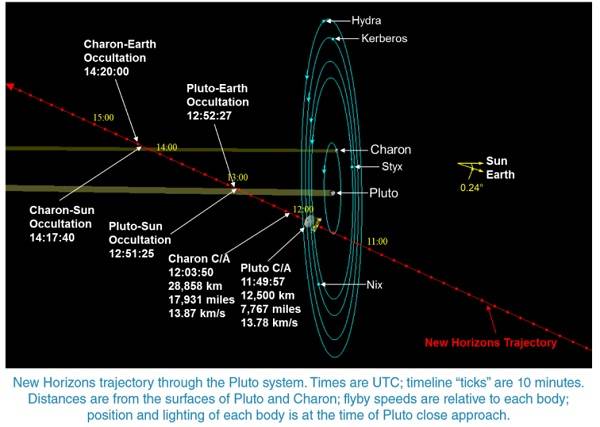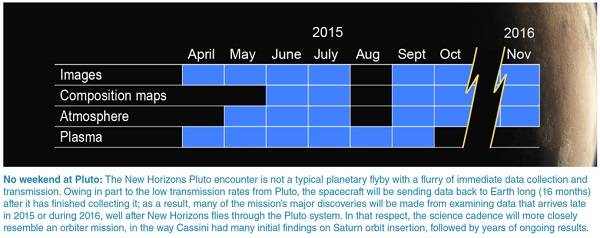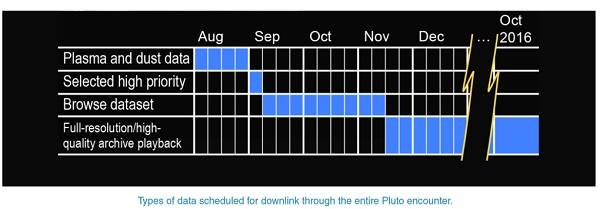This article is more than 1 year old
PLUTO FLYBY: Here's your IT angle, all you stargazing pedants
Top astroboffins brief El Reg on space, storage and thin interstellar pipe
Slow interstellar internet
A major challenge for the New Horizons mission is the relatively low "downlink" rate at which data can be transmitted to Earth, especially when compared with rates now common for high-speed net surfers.
During the Jupiter flyby in February 2007, New Horizons sent data home at about 38kbps. The average downlink rate after New Horizons passes Pluto (and sends the bulk of its encounter data back to Earth) is approximately 2,000 bits per second, a rate the spacecraft achieves by downlinking with both of its transmitters through NASA's largest antennas.
Even then, it will take until late 2016 to bring down all the encounter data stored on the spacecraft's recorders.

Since NASA's Deep Space Network has to track other missions besides New Horizons, the team has produced a lossy compressed browse data set that can be sent down more quickly. The browse dataset will be downlinked before the end of 2015; the complete dataset will be downlinked after the browse dataset.
Data received on Earth through the Deep Space Network will be sent to the New Horizons Mission Operations Center, where data will be "unpacked" and stored.

The mission operations and instrument teams will scour the engineering data for performance trend information, while science data will be copied to the Science Operations Center at the SwRI.
At the Science Operations Center, data will pass through Peterson's "pipeline" software that converts the data from instrumental units to scientific units, based on calibration data obtained for each instrument.
The raw and calibrated data, along with various ancillary files (such as documents describing the pipeline process or the science instruments) will be archived at the Small Bodies Node of NASA's Planetary Data System.

"The pipeline," Peterson explained, "also calibrates the science data into real physical units, which is important for scientific analysis. It's a great part of the project on which to work, since I get to see the images hot off the press."
"In addition to the Data Pipeline, a main data downlink responsibility is carefully archiving the data for use by scientists in the far future," added Peterson.
"We will be busy processing the data from encounter for about 16 months — it will take that long to come down from the spacecraft."
The Register looks forward to bringing you more talk about the Pluto-bound podule itself next, from the spacecraft team. ®
